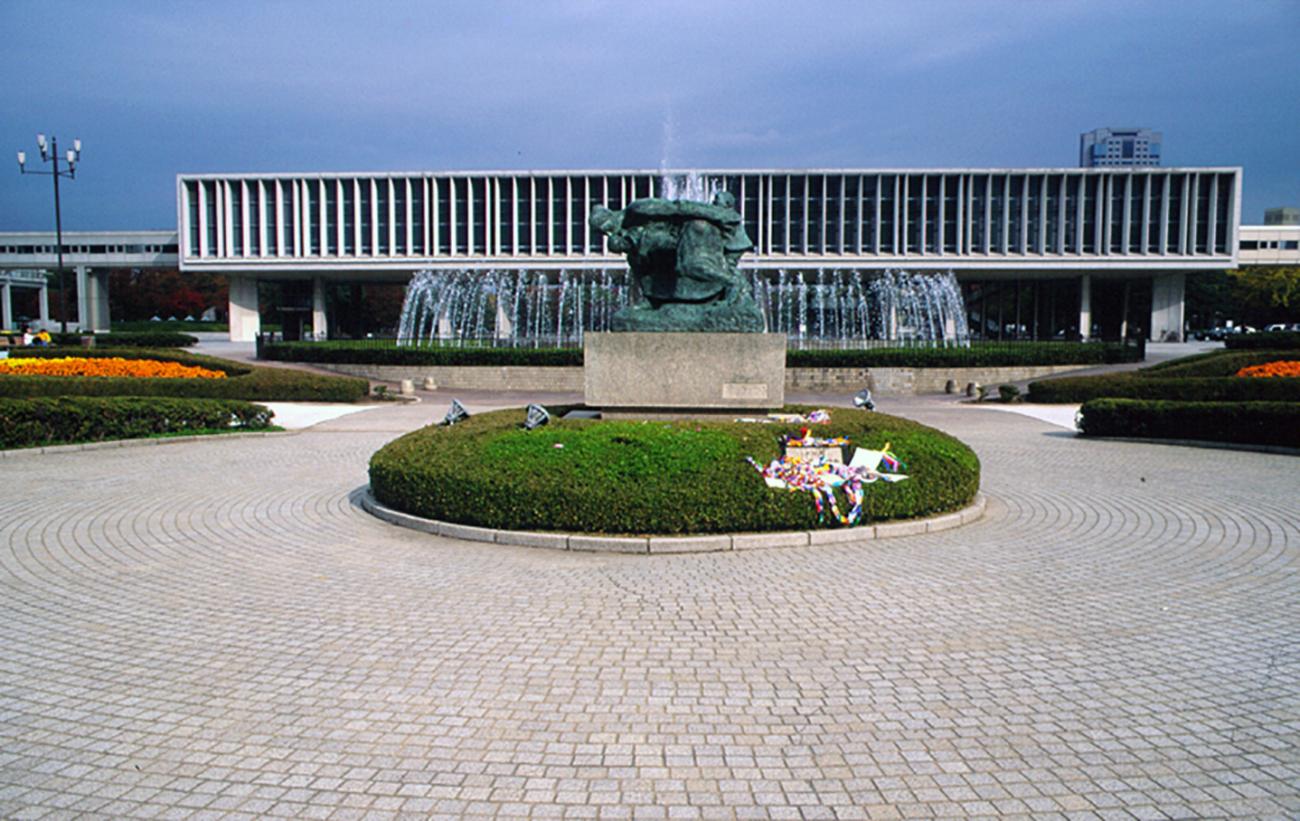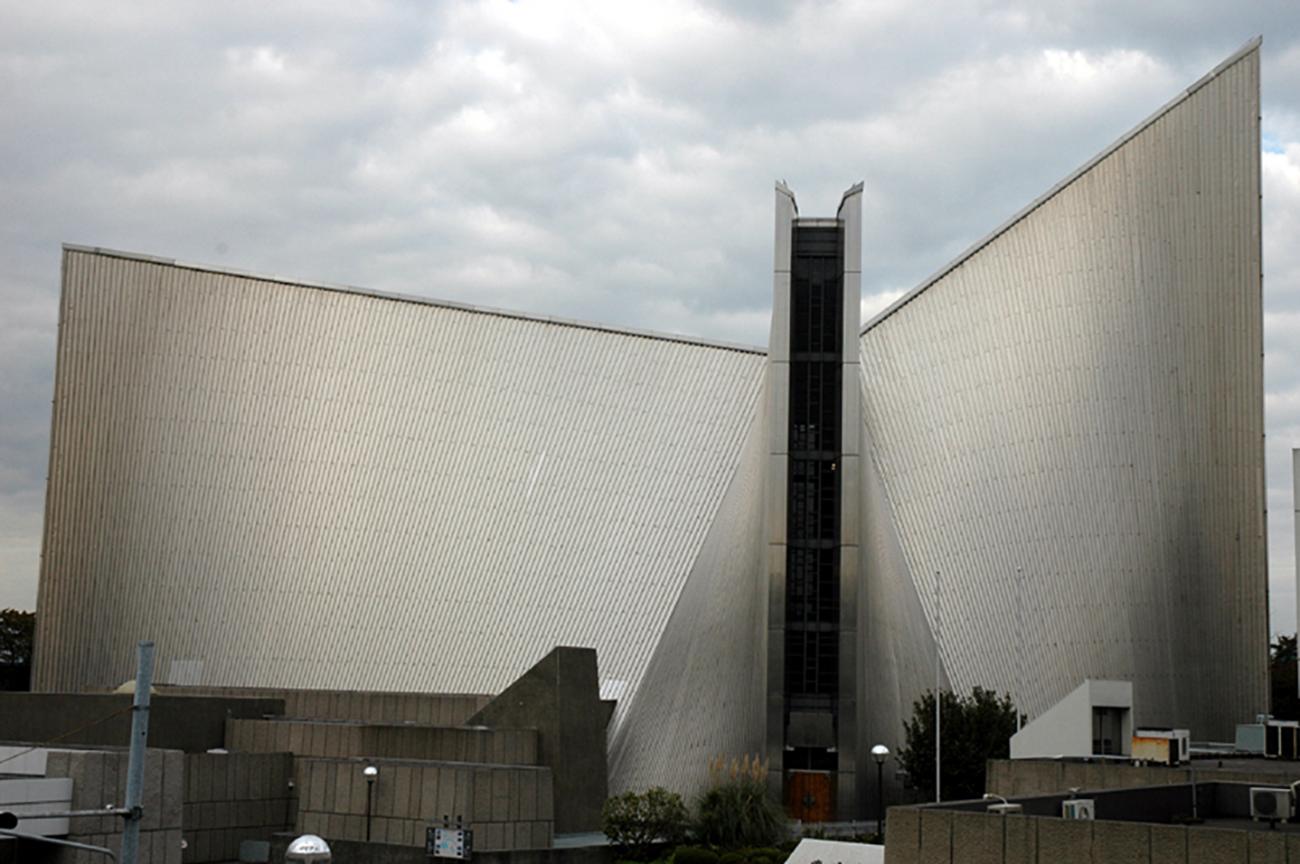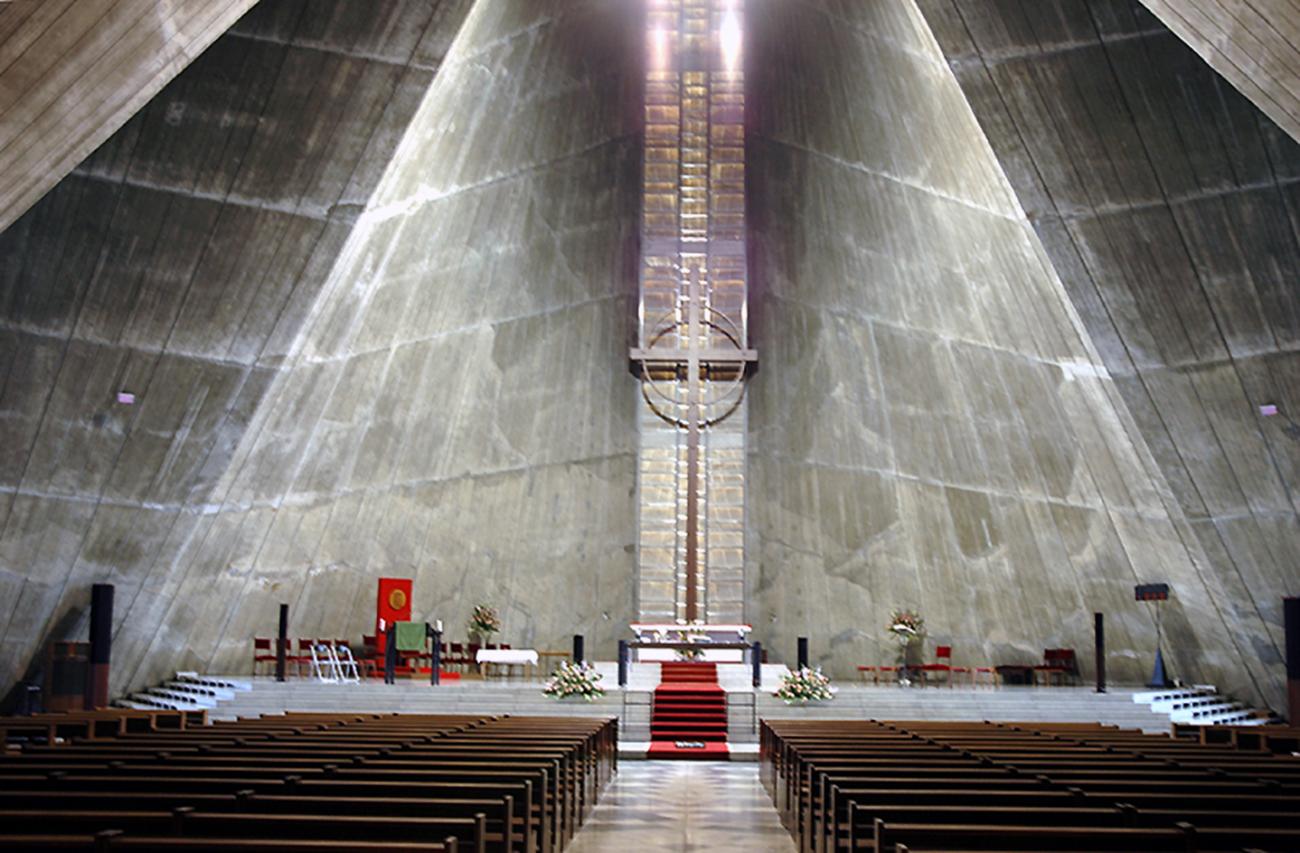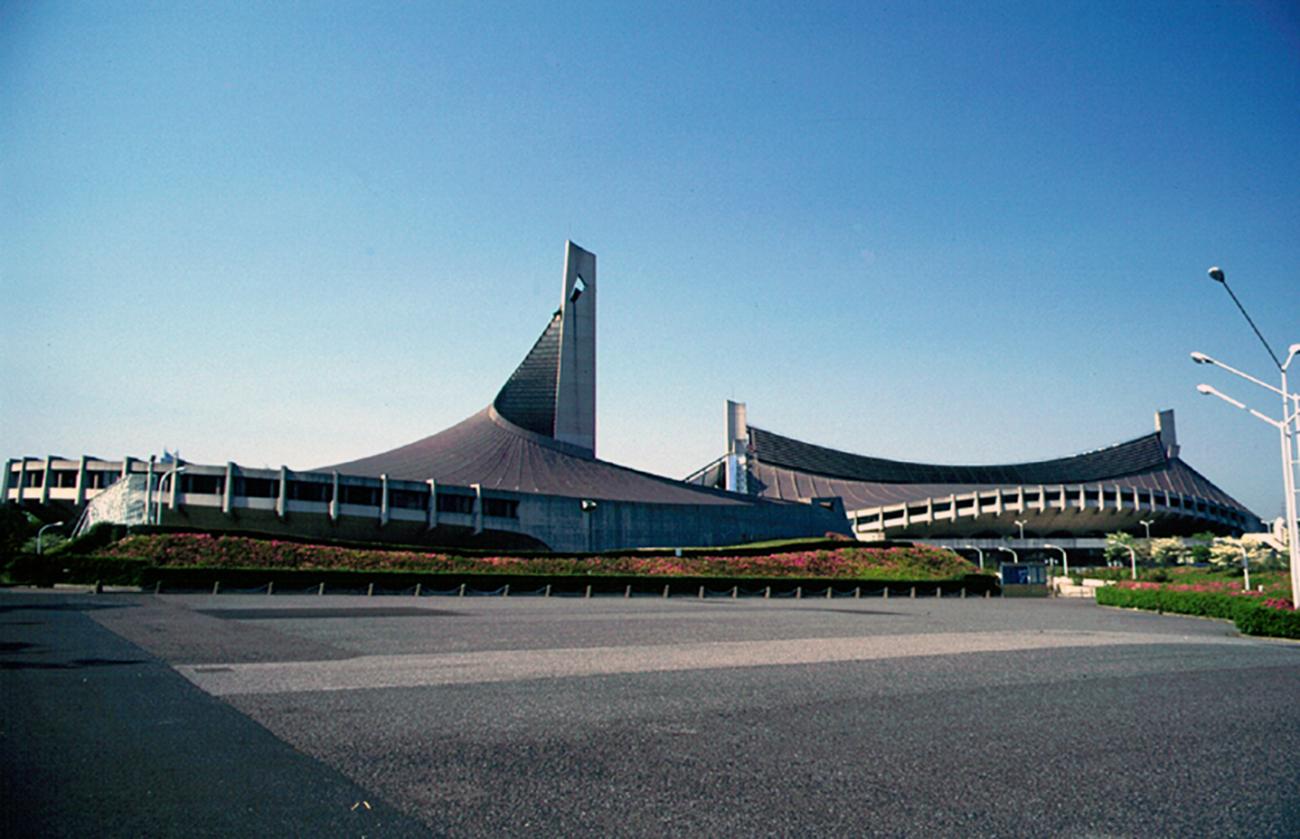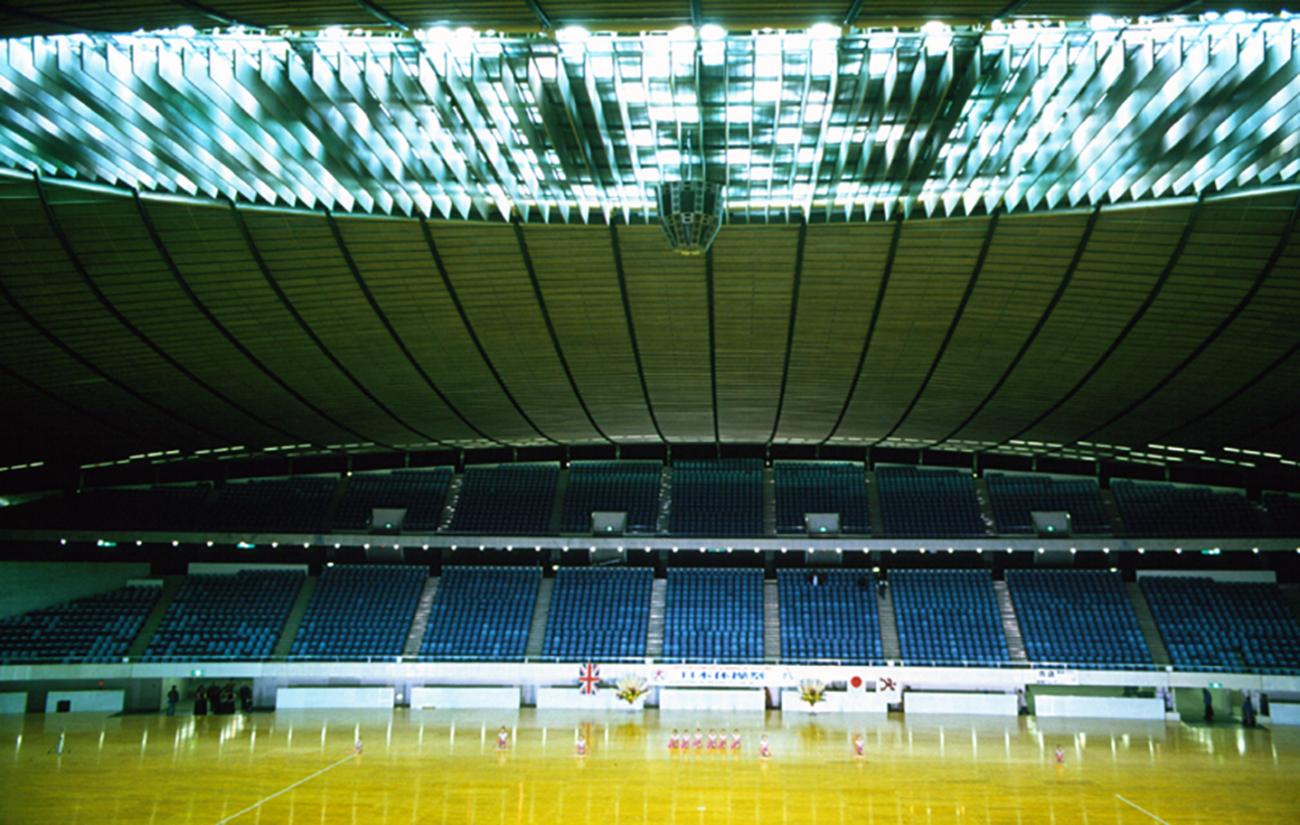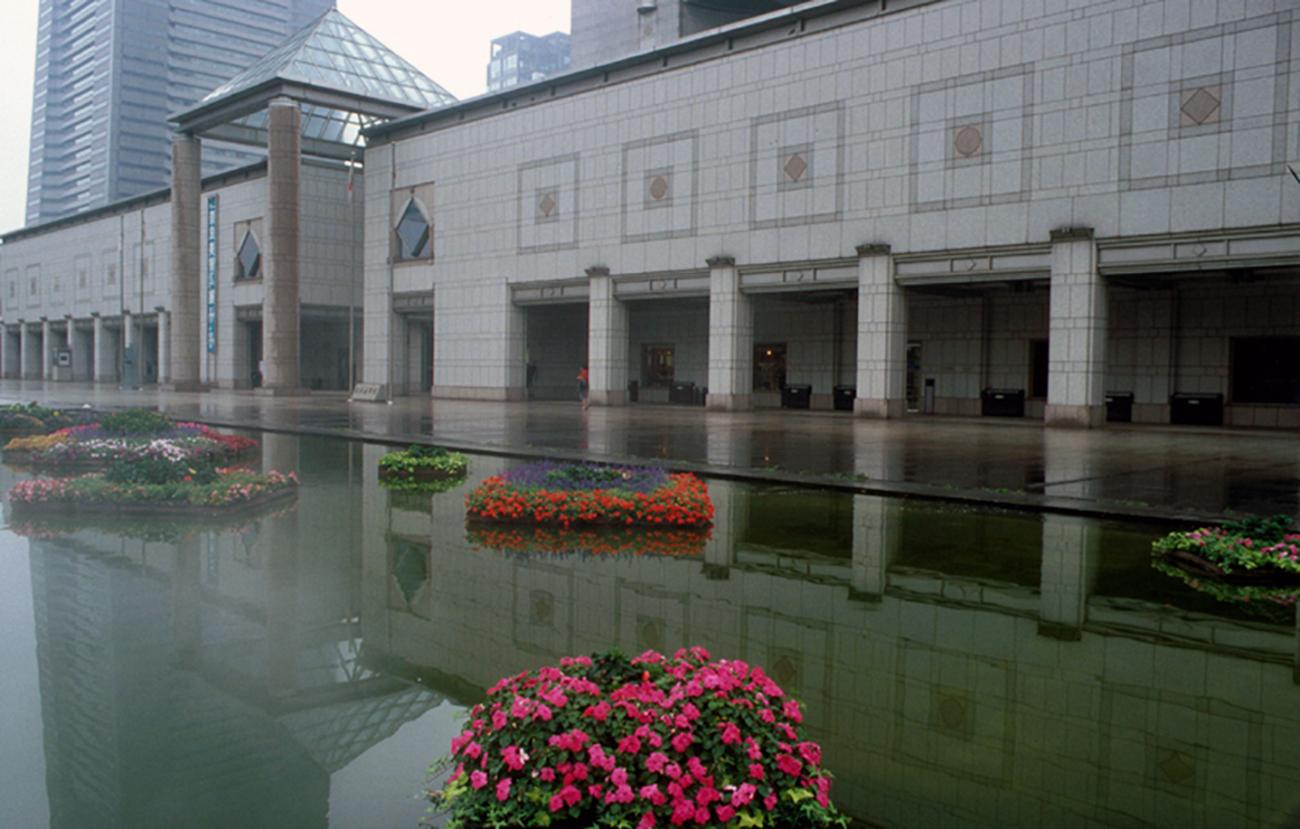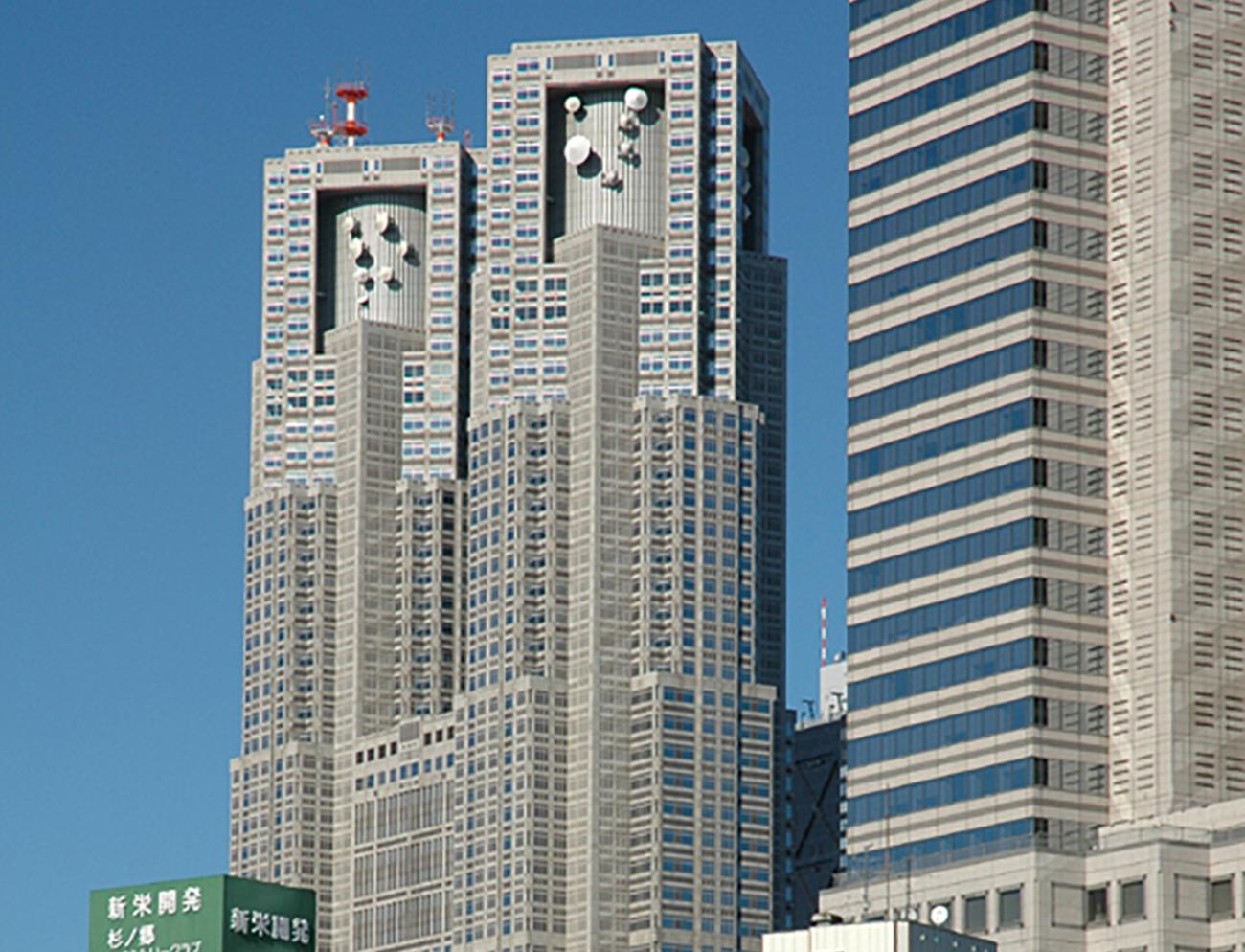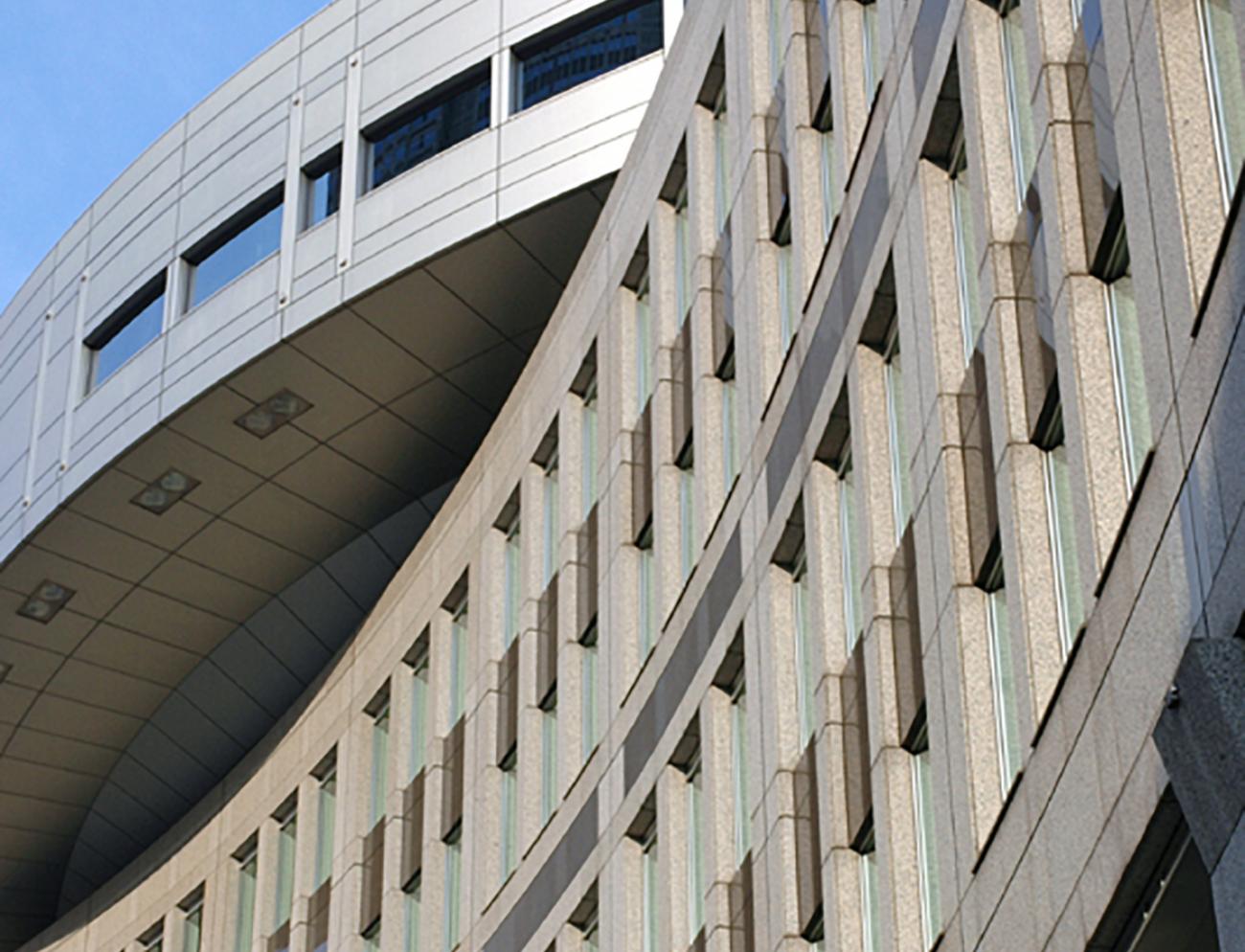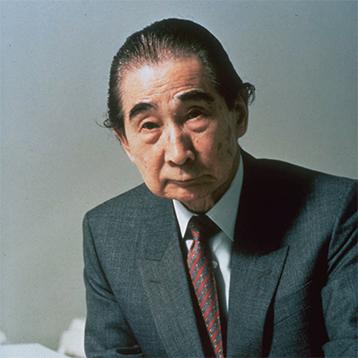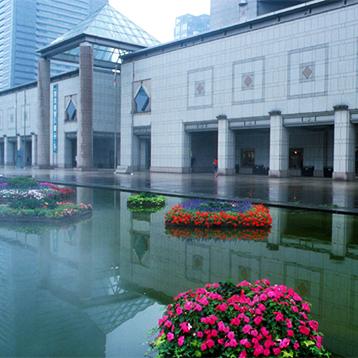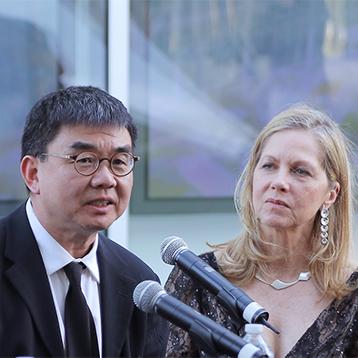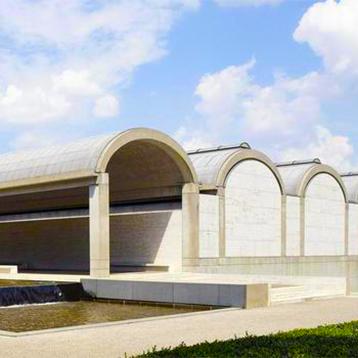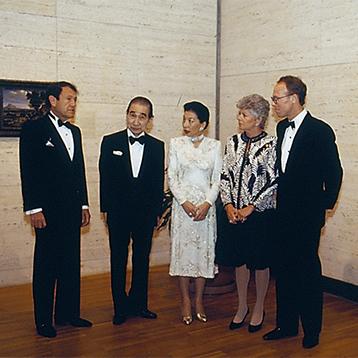Kenzo Tange (1913-2005), winner of the 1987 Pritzker Architecture Prize, is one of Japan’s most honored architects. Teacher, writer, architect, and urban planner, he is revered not only for his own work but also for his influence on younger architects. He was born in Osaka, Japan in 1913 and was raised in the small city of Imabari, Shikoku Island. Although becoming an architect was beyond his wildest dreams as a boy, it was Le Corbusier’s work that stirred his imagination so that in 1935, he became a student in the Architecture Department of Tokyo University. In 1946, he became an assistant professor at Tokyo University, and organized the Tange Laboratory. His students included Fumihiko Maki, Koji Kamiya, Arata Isozaki, Kisho Kurokawa, and Taneo Oki.
Tange was in charge of the reconstruction of Hiroshima after World War II. The Hiroshima Peace Center and Park begun in 1946 made the city symbolic of the human longing for peace. Architecturally, the Peace Center shows a deep understanding of traditional culture while at the same time is a signpost in the search for a modern style in Japan.
Tange research and interest in urban planning extended throughout his career. His doctorate, completed in 1959, was titled, "Spatial Structure in a Large City," an interpretation of urban structure on the basis of people's movements commuting to and from work. His "Plan for Tokyo 1960" was the Tange Team's logical response to these problems, giving thought to the nature of the urban structure that would permit growth and change. His Tokyo Plan received enormous attention world-wide, for its new concepts of extending the growth of the city out over the bay, using bridges, man made islands, floating parking and mega structures. Other urban design and planning projects were begun in 1967 for the Fiera District of Bologna, Italy, and for a new town with residences for 60,000 in Catania, Italy.
For his Tokyo Cathedral of Saint Mary, he visited several medieval Gothic examples. "After experiencing their heaven-aspiring grandeur and ineffably mystical spaces," he says, "I began to imagine new spaces, and wanted to create them by means of modern technology."
Yamanishi Broadcasting and Press Center (1966) in Kofu, Japan uses many of Tange's new theories—cylinders house staircases, elevators, air conditioning and electrical equipment systems. The horizontal spaces connecting them are likened to the buildings along a street. Some plots are vacant and others are occupied. An important aspect was the expansion potential of the complex. Open spaces between floors, which now serve as terraces and roof gardens, could be enclosed when needed.
